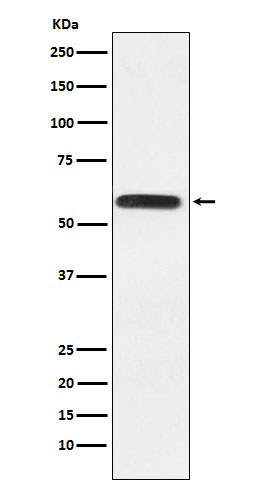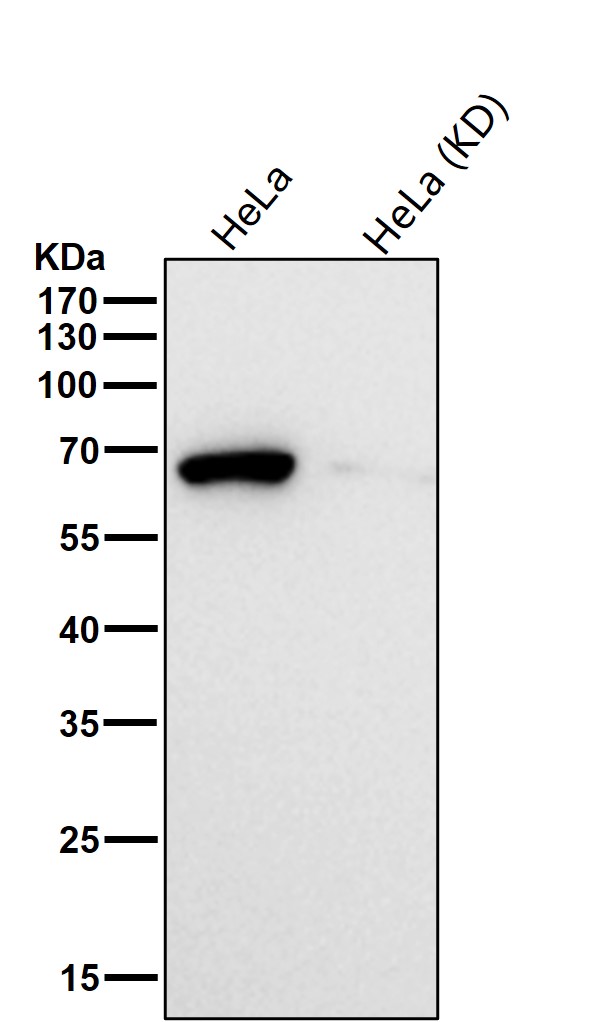


| WB | 咨询技术 | Human,Mouse,Rat |
| IF | 1/20-1/50 | Human,Mouse,Rat |
| IHC | 1/100-1/200 | Human,Mouse,Rat |
| ICC | 技术咨询 | Human,Mouse,Rat |
| FCM | 咨询技术 | Human,Mouse,Rat |
| Elisa | 咨询技术 | Human,Mouse,Rat |
| Aliases | ADLTE; ADPAEF; ADPEAF; Epitempin 1; EPITEMPIN; EPT; ETL1; LGI1;;Epitempin 1 |
| WB Predicted band size | 64 kDa |
| Host/Isotype | Rabbit IgG |
| Antibody Type | Primary antibody |
| Storage | Store at 4°C short term. Aliquot and store at -20°C long term. Avoid freeze/thaw cycles. |
| Species Reactivity | Human,Mouse,Rat |
| Immunogen | A synthesized peptide derived from human Epitempin 1 |
| Formulation | Purified antibody in PBS with 0.05% sodium azide,0.05% BSA and 50% glycerol. |
+ +
以下是3-4篇关于LGI1抗体的代表性文献概览:
---
1. **文献名称**: *Antibodies to Kv1 potassium channel-complex proteins leucine-rich, glioma inactivated 1 protein and contactin-associated protein-2 in limbic encephalitis, Morvan’s syndrome and acquired neuromyotonia*
**作者**: Irani SR, et al.
**摘要**: 首次系统描述了LGI1抗体与边缘性脑炎、Morvan综合征等疾病的关联,揭示了患者常见的认知障碍、癫痫及低钠血症等临床特征,并探讨了抗体介导的免疫机制。
---
2. **文献名称**: *The clinical spectrum of Caspr2 antibody-associated disease*
**作者**: van Sonderen A, et al.
**摘要**: 比较了LGI1和Caspr2抗体相关疾病的临床差异,指出LGI1抗体患者更易出现面臂肌张力障碍发作(FBDS)、记忆障碍及抗癫痫药物抵抗性癫痫,而Caspr2抗体更多累及周围神经。
---
3. **文献名称**: *LGI1 antibodies associated seizures: Short-term outcomes and immunotherapy response*
**作者**: Thaler FS, et al.
**摘要**: 研究LGI1抗体脑炎患者的癫痫表型,发现早期免疫治疗(如类固醇或IVIG)可显著改善发作频率,强调脑脊液抗体检测对诊断的重要性。
---
4. **文献名称**: *Autoimmune encephalitis as differential diagnosis of infectious encephalitis*
**作者**: Dalmau J, et al.
**摘要**: 综述了LGI1抗体脑炎与其他自身免疫性脑炎(如抗NMDAR脑炎)的鉴别要点,提出其独特的FBDS症状和相对良好的预后,推荐免疫疗法作为一线治疗。
---
**注**:以上文献均发表于*Neurology*、*Brain*等神经病学权威期刊,具体年份可补充查询PMID号获取。
LGI1 (leucine-rich glioma-inactivated 1) antibody is associated with autoimmune encephalitis, a neurological disorder characterized by inflammation of the brain. Discovered in 2010. LGI1 is a secreted neuronal protein that interacts with presynaptic ADAM23 and postsynaptic ADAM22. forming a trans-synaptic complex involved in synaptic transmission and plasticity. Antibodies targeting LGI1 disrupt this interaction, leading to neuronal hyperexcitability.
LGI1 antibody encephalitis predominantly affects adults, with a slight male predominance. Clinical features include faciobrachial dystonic seizures (FBDS), memory deficits, confusion, and psychiatric symptoms. FBDS, brief involuntary movements of the face and arm, are pathognomonic and often precede cognitive decline. Hyponatremia is a common laboratory finding.
Diagnosis relies on detecting LGI1 antibodies in serum or cerebrospinal fluid (CSF) using cell-based assays. Early immunotherapy (steroids, IVIG, or plasma exchange) improves outcomes, though residual cognitive deficits may persist. Unlike other autoimmune encephalitides (e.g., anti-NMDAR), LGI1 antibodies are typically IgG4 subclass and not strongly linked to underlying tumors.
Research suggests genetic susceptibility (e.g., HLA-DR7 haplotype) and molecular mimicry as potential mechanisms. However, the exact pathophysiology remains unclear. Current studies focus on long-term outcomes, biomarker validation, and targeted therapies. LGI1 antibody encephalitis exemplifies the intersection of autoimmunity and neurology, emphasizing early recognition for optimal management.
×